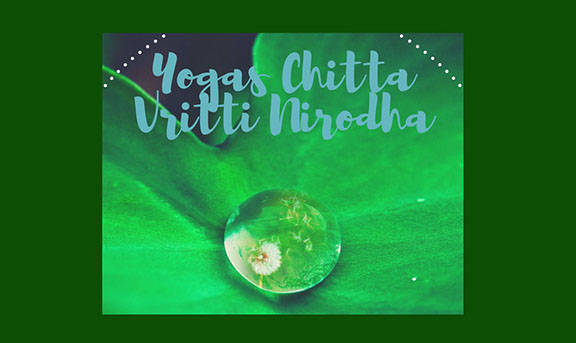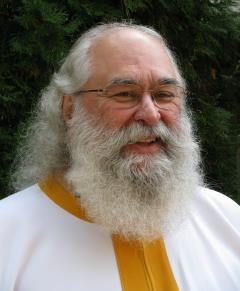 Nirodha as the Root of Intuitive Insight
Nirodha as the Root of Intuitive Insight
One of the major themes in the Sutras is the ability to distinguish between the mind, even the completely tranquil mind – and the Self, our True Nature. This ability is called viveka (discriminative discernment) or Yoga pratyaksha (yogic vision). It is first presented in sutra 2.26 as the requirement to overcome ignorance. Viveka can be cultivated by following the eight limbs of Yoga (2.29). Together, these eight limbs keep the mind focused and moving toward our center.
Although Yoga pratyaksha is not mentioned in the Sutras, pratyaksha – direct perception – is given as one of the means to attain reliable knowledge. Yoga pratyaksha, the highest order of direct perception occurs without the aid of the senses. This degree of insight is needed to distinguish between the calm, clear mind, which is still founded on a quiet subtle ego, and the Self. The good news is that Yoga pratyaksha is developed through a multi-faceted collection of practices and lifestyle changes. Small, definite steps lead to great accomplishments in Yoga.
Nirodha and the Moral Life
Nirodha is turning toward what is real and abiding, our essence and source, the root of all experiences of peace and happiness. Patanjali’s Yoga takes this into account by offering principles and guidance for cultivating nirodha in and through everyday life. The main observances are:
Yama and Niyama: the moral and ethical foundation of Yoga. (See 2.29 – 2.45)
Pratipaksha Bhavana: the cultivation of a counterforce as an aid to following the yamas and niyamas and to counteract the unsettling influence of any disturbing thought. (See 2.33 & 2.34).
The Four Locks and Four Keys: ways to attain and maintain a tranquil mind under all circumstances (See 1.33).
There is one more principle to explore before we leave nirodha, pratiprasava, returning to the source.
Nirodha is a Return to Our Source
The word, pratiprasava only occurs twice in the Sutras but it is a central theme.
The process that began with turning inward, away from the vrittis and the externalized state of mind, then continued with the single thoughts, pratyaya, and finally the subconscious impressions, finds its culmination with pratiprasava. Nature, which has been the good, reliable teacher and guide has finished her job of transformation of the individual.
The idea of nature returning to its source needs a bit of explanation, since as a feature of spiritual growth, it represents a personal, subjective experience. It is the gradual ending of the differentiation of matter into objects — the stilling of all physical activity for the yogi. Once completely quieted, the yogi experiences the Self/Purusha – it now stands apart from the dance of Spirit and nature. We can use the phenomenon of sound as an example.
Sound requires two factors: something to vibrate that generates the sound waves, and a medium, like air to propagate the sound. Think of a church bell ringing. The striking of the bell creates the vibration/sound. The components and particles in the air then transmit that vibration, spreading the sound. Without any further stimulus, the sound of the bell fades, but its reverberations continue for a while as the sound waves travel through the air. The distance the sound travels, depends on how strong the original vibration was and the amount of obstacles the waves encounter that dissipate the sound waves. Eventually, we return to quiet. While bell and the air still exist, they have returned to their source: potentiality.
Similarly, for advanced yogis, the inwardly directed one-pointed focus removes all stimuli allowing for the mind to return to its source: Purusha. For the yogi, nature (prakriti) has finished its job.
We can infer a final stage of spiritual development. Fully matured yogis don’t remain sitting in the deepest of meditative states. They are still a human beings. The final stage of liberation remains: to integrate the experience of Self-realization into the physical world in order to be of service to others. This is what is known as becoming a jivanmukta – one who is fully liberated while still in the physical body.
About the Author:
 Reverend Jaganath Carrera is and Integral Yoga Minister and the founder/spiritual head of Yoga Life Society. He is a direct disciple of world renowned Yoga master and leader in the interfaith movement, Sri Swami Satchidananda—the founder and spiritual guide of Satchidananda Ashram–Yogaville and Integral Yoga International. Rev. Jaganath has taught at universities, prisons, Yoga centers, and interfaith programs both in the USA and abroad. He was a principal instructor of both Hatha and Raja Yoga for the Integral Yoga Teacher Training Certification Programs for over twenty years and co-wrote the training manual used for that course. He established the Integral Yoga Ministry and developed the highly regarded Integral Yoga Meditation and Raja Yoga Teacher Training Certification programs. He served for eight years as chief administrator of Satchidananda Ashram–Yogaville and founded the Integral Yoga Institute of New Brunswick, NJ. He is also a spiritual advisor and visiting lecturer on Hinduism for the One Spirit Seminary in New York City. Reverend Jaganath is the author of Inside the Yoga Sutras: A Sourcebook for the Study and Practice of Patanjali’s Yoga Sutras, published by Integral Yoga Publications. His latest book Patanjali’s Words is a work-in-progress.
Reverend Jaganath Carrera is and Integral Yoga Minister and the founder/spiritual head of Yoga Life Society. He is a direct disciple of world renowned Yoga master and leader in the interfaith movement, Sri Swami Satchidananda—the founder and spiritual guide of Satchidananda Ashram–Yogaville and Integral Yoga International. Rev. Jaganath has taught at universities, prisons, Yoga centers, and interfaith programs both in the USA and abroad. He was a principal instructor of both Hatha and Raja Yoga for the Integral Yoga Teacher Training Certification Programs for over twenty years and co-wrote the training manual used for that course. He established the Integral Yoga Ministry and developed the highly regarded Integral Yoga Meditation and Raja Yoga Teacher Training Certification programs. He served for eight years as chief administrator of Satchidananda Ashram–Yogaville and founded the Integral Yoga Institute of New Brunswick, NJ. He is also a spiritual advisor and visiting lecturer on Hinduism for the One Spirit Seminary in New York City. Reverend Jaganath is the author of Inside the Yoga Sutras: A Sourcebook for the Study and Practice of Patanjali’s Yoga Sutras, published by Integral Yoga Publications. His latest book Patanjali’s Words is a work-in-progress.


